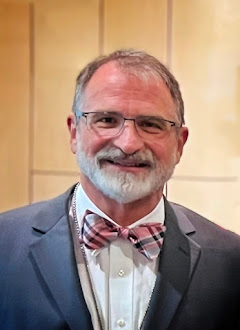“Everything To Live For”
Acts 2:14, 22-32; 1 Peter 1:3-9; John 20:19-31[1]
Several years ago my oldest son Derek and I visited two canyons in the Southwest. We spent a day at the
Archaeologists think that
If you’ve ever been to the
As Derek and I wandered the ruins of Chaco Canyon that day—with about 12 other people as opposed to 12,000!—I found myself wondering what it was that enabled men and women to do what it took to survive the harsh conditions of that time and place. It’s hard enough to survive what life has to offer in the relative comfort of what we call “civilization.” It’s hard to understand what motivated people to endure the hardships of life in those primitive conditions. What did they have to live for?
If we took the time to study what life was like for the early Christians, we might ask the same question. As Peter says in his letter, they suffered for their faith in a wide variety of ways—ranging from ridicule to hostility, and from ostracism to lynching! In the midst of their hardships, the Apostle Peter reminded them that the Easter faith offered them a “living hope.” Their hope was “alive” because it is a hope that comes from the life of the risen Christ who defeated death. Their hope was alive because it is a hope that comes from the promise of never-ending life in God’s new creation and “brand-new” life here and now through God’s Spirit. Their hope was alive because it is a hope that nothing can quench—not doubt, not hostile enemies, not even martyrdom, which they suffered on occasion. Because of their “living hope,” Peter assured them that they had “everything to live for.”[3]
But there had to have been times when those First-Century Christians asked themselves why they had to suffer so much if all that was true. I think part of the problem is that our faith in the resurrection and our hope of new life simply exceed our grasp. But just because we may not be able to get a handle on them doesn’t mean that our faith and hope are not just as alive today as they were in Peter’s day.[4]
Even though we may not be able to fully grasp our “living hope,” the good news of Easter is that the new life of the risen Christ is something that takes hold of us and changes us forever.[5] That is the basis for our hope and faith—not that we can grasp everything there is to know about God and faith and eternity, but rather that God has grasped us through the living presence of our Lord and Savior Jesus the Christ. The hope of Easter, that new life will one day transform everything and everyone, gives us everything to live for.[6]
And as Peter assured those first Christians doing their best to live their lives in the midst of the struggles of their world, he continues to assure us that the experience of being “grasped” by God is one that cannot be diminished by time, or doubt, or even death. It is an experience that transforms us for good because we are from then on “kept safe by the power of God” (1 Peter 1:5, TEV).
[1] © 2008 Alan Brehm. A sermon preached on 3/30/08 by Rev. Dr. Alan Brehm at First Presbyterian Church,
[2] See the article on “
[3] 1 Peter 1:3 (The Message): “Because Jesus was raised from the dead, we’ve been given a brand-new life and have everything to live for.”
[4] Walter Wink, “Resonating With God’s Song,” The Christian Century (March 23, 1994) “The resurrection is not a fact to be believed, but an experience to be shared”
[5] Paul Tillich, “Faith and Uncertainty,” in The New Being, 77: says, “In our uncertainty there is one fixed point of certainty, however we may name it and describe it and explain it. We may not comprehend, but we are comprehended.”
[6] Jürgen Moltmann, Theology of Hope, 85, 88; cf. Jürgen Moltmann, The Way of Jesus Christ, 256; Jürgen Moltmann, Experiences of God, 20, 28


No comments:
Post a Comment